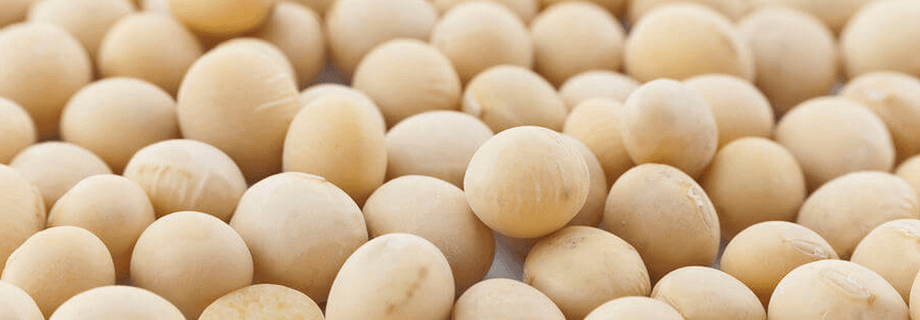Soybean Dehulling – How Does it Work?

A topic we come across often is the need, or want, for soybean dehulling. Dehulling (or decortication) is the process of removing the hull of a seed and can be applicable to more than just soybeans. Typically, a producer wishes to decrease the final fiber content in the end product, so dehulling is the answer.
To start, the seeds should have a moisture content of about 10%. This dryness allows the beans to be cracked as they pass through the roller mill.
Typical dehulling process flow:
1. Beans are sent through the roller mill. Ideally, soybeans should be cracked into 4-6 pieces.
2. Afterwards, they are conveyed to the primary aspirator. The aspirator has a series of steps which the beans bounce on. The fan/cyclone system is set to only vacuum off the hulls while the meats fall through via gravity into the conveyor.
3. The cyclone picks up a combination of hulls as well as meats and deposits them into the sifter/screener. The sifter/screener contains a series of screens that separates and classifies the remaining hulls and meats. The shaking action loosens everything and places them into various streams, usually overs, unders, and discard.
4. The overs/unders are conveyed to their own aspiration systems complete with fans. Here, they go through the same steps as primary aspiration, but with less aggressive settings to retrieve even more meats.
5. Finally, dehulled product is ready to move on to more processing, which in our case is oftentimes extrusion. Hulls are usually collected and sent to a hammer mill for final grinding to reduce overall volume.
Typically, a system such as the one described will retrieve approximately 98% of available soybean meal. The rest is generally lost due to fines generation and conveying losses. This system would be used for maximum meal retention in a plant that processes at least 4-6 tons per hour. There are options for smaller plants as well, such as only performing primary aspiration or using a smaller classifier.
One must consider the cost to benefit ratio if thinking about dehulling. Again, systems such as the one described should be used on higher capacity plants since investment costs may be higher than what the system can return. Another important aspect is whether you really need dehulling or not. Fiber may be a dietary requirement, so leaving the hulls in during processing may be the best option. Depending on the downstream process, typical limitations of hulls may be eliminated by means such as high shear extrusion. For more information, contact the Insta-Pro team to discuss processing and nutrition. Happy dehulling!



